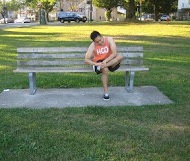What Are Blisters?
- A blister is a tiny pouch of liquid that collects in the top layers of the skin.
- It generally forms when damage is sustained to the outer layer of the skin.
- Fluid accumulates underneath the damaged skin, suppressing the tissue underneath.
- This shields the tissue from additional harm and allows it to heal.
- Almost all blisters are occupied with a fluid known as serum, which is the part of the blood that stays after clotting agents and red blood cells and have been removed.
- Blisters are occasionally filled with blood or excretion if they become swollen or infected.
- Blisters can grow on any part of the body but usually occur on the feet and hands.
What Are The Causes Of Blisters?

Blisters can be caused by:
- Rubbing of the skin;
- Touching certain chemicals, such as cleansing agents;
- Heat – for instance, from sunburn or a burn; and
- Medical illnesses, such as chickenpox.
When To Phone Your Doctor
Most blisters heal by themselves within 7 days and don’t need medical assistance.
See your doctor if you notice blisters that:
- Have become infected.
- Extremely sore.
- Keep recurring.
How To Prevent Blisters
There are various methods you can do to stop getting blisters as a result of rubbing, chemicals or sunburn. For instance, you can:
- Wear comfy shoes that fit you well.
- When dealing with detergents or chemicals, wear gloves.
- Always use sunscreen.
- Never burst or press your blisters.
- Even though it may be tempting, try not to rupture your blister because it could result in an infection or prolong the time it takes to heal.
- If you have blisters that are either big or painful, your doctor might decide to lance the blister under hygienic conditions.
- If your blister does happen to burst, don’t pick off any dead skin covering the blister.
- Let the fluid within the blister drain and conceal the affected region with a dry, hygienic bandage to guard it from infection until it is fully healed.
Related Video On Blisters
